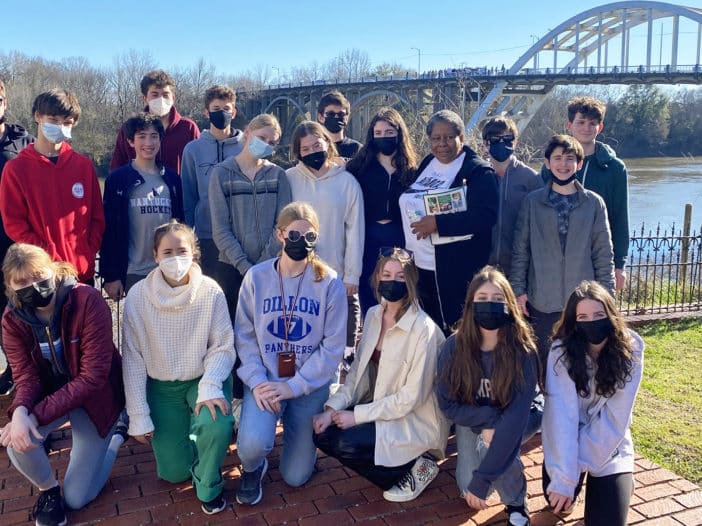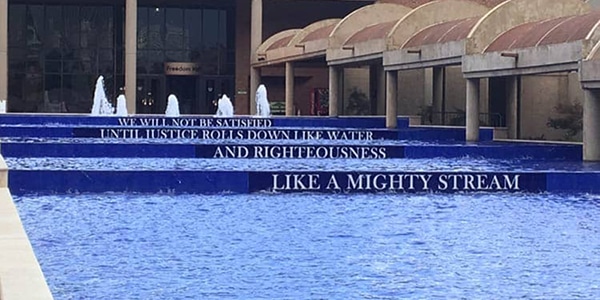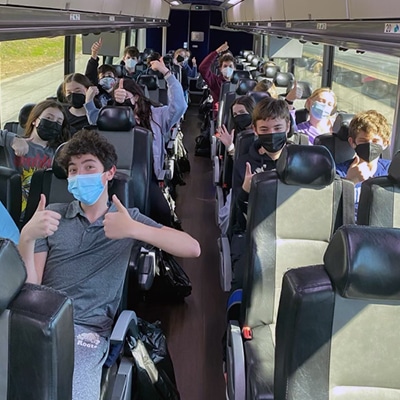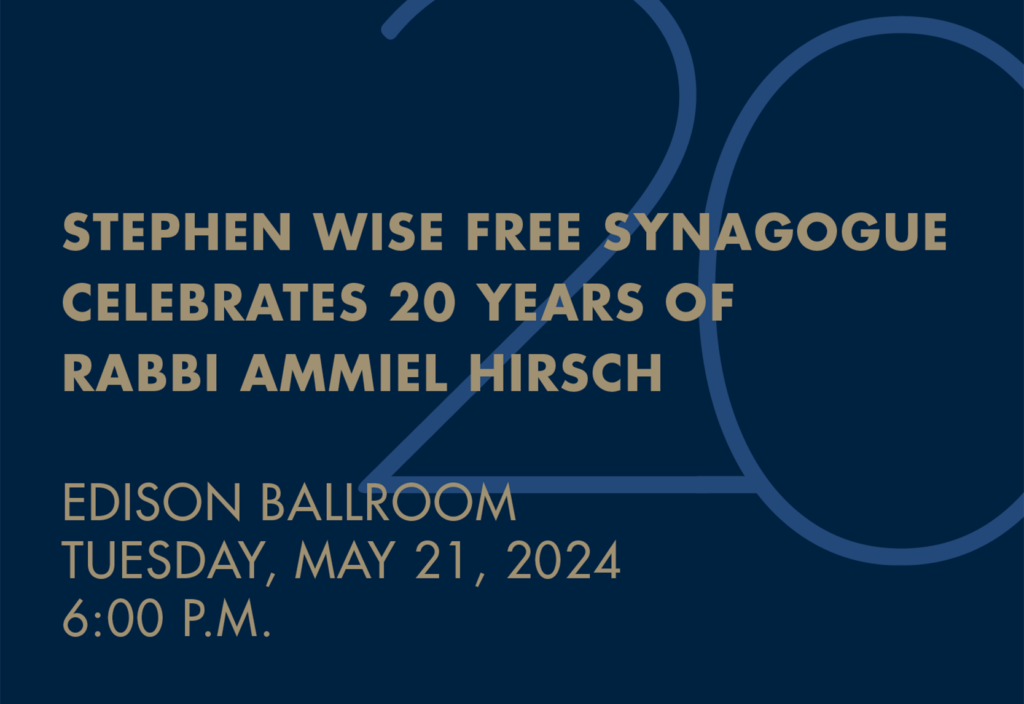
“I was struck by the sheer enormity of the lynching memorial,” recalls Hadley Levenson. “I had understood the brutal legacy of lynching in America, but seeing it represented in such a stark way really shook me.”
“It was hard — and uncomfortable — to be confronted with the scale of lynchings throughout the 20th century,” agrees Luke Kosner.
Hadley and Luke were part of a group of 19 eighth and ninth graders who traveled to Alabama as a part of Stephen Wise Free Synagogue and Temple Israel’s civil rights journey in February.
“The trip really spoke to who we are as Jews and where our teens are right now,” says Rabbi Rena Rifkin, who leads our Religious School as director of youth education. “Social justice is at the core of everything we stand for at Stephen Wise — and we loved the idea of partnering with another synagogue.” Rabbi Shira Gluck, who traveled with the teens, explains: “We wanted our teens to learn about civil rights through a Jewish lens.”
The weary-eyed group departed for New York’s LaGuardia airport at 4:45 a.m. on the morning of Friday, Feb. 18, and touched down in Atlanta just before lunchtime. In Atlanta, the students boarded a bus and started the 150-mile journey southwest on I-85 into the heart Alabama, where the highway ends in Montgomery.
The group welcomed Shabbat at the Reform Temple Beth Or and spent the next day exploring the city and learning about the evolution of racial oppression. In Selma, they met with activist Joanne Bland, who at age 13 witnessed Bloody Sunday — when civil rights marchers were brutally beaten as they tried to make the 54-mile trek to Montgomery — firsthand. “Walking across the Edmund Pettus Bridge” — named for a Confederate general and Klu Klux Klan grand dragon — “with a protester who had been there and with your rabbi sends a really powerful message,” says Rabbi Gluck.
They turned north toward Tennessee and pressed another hundred miles onward to further challenge their preconceived notions and learn about southern Jewish life then and now. “Birmingham is such a vibrant city with a rich past. Being there made me realize that Alabama is much more than the rural place I had imagined,” Luke admits. And he’d never really thought about these historical events from a Jewish perspective. “The trip showed me the importance of rabbis to the civil rights movement.”
And Hadley found it eye-opening to visit local synagogues, like Birmingham’s Temple Beth-El, “where the congregations are much smaller than Stephen Wise’s. “It reminded me of the connectivity of the Jewish community across the world.”
“Our teens also grappled with the idea that in American in the 1960s, Jews were not considered white — and that the Black and Jewish experiences are intersectional,” Rabbi Gluck recounts.
Back in Atlanta, the students learned about the lynching of Leo Frank — a Jew — and visited the historic neighborhood where Martin Luther King Jr. was born and now lies at rest. Emblazoned on the steps of the reflecting pool next to King’s tomb are the words: “We will not be satisfied until justice rolls down like water and righteousness like a mighty stream.”

“When Dr. King said that, he was quoting Amos!” Rabbi Gluck says. “I took the opportunity to teach our teens about how prophetic Judaism and the pursuit of justice are connected. The justice and righteousness we were fighting for in the 50s and 60s is the same justice and righteousness we’ve always sought to advance.”
As the trip reached its end, the students realized how they’d bonded with each other along the way. “I made new friends and re-connected with kids I had met a long time ago,” says Luke. And Hadley “forged amazing friendships with fellow teens whom I would never get the chance to meet normally.”
“This is how we can teach and create Jewish life in the real world,” says Rabbi Rifkin. “It’s really important to build community outside the walls of our synagogue.”



